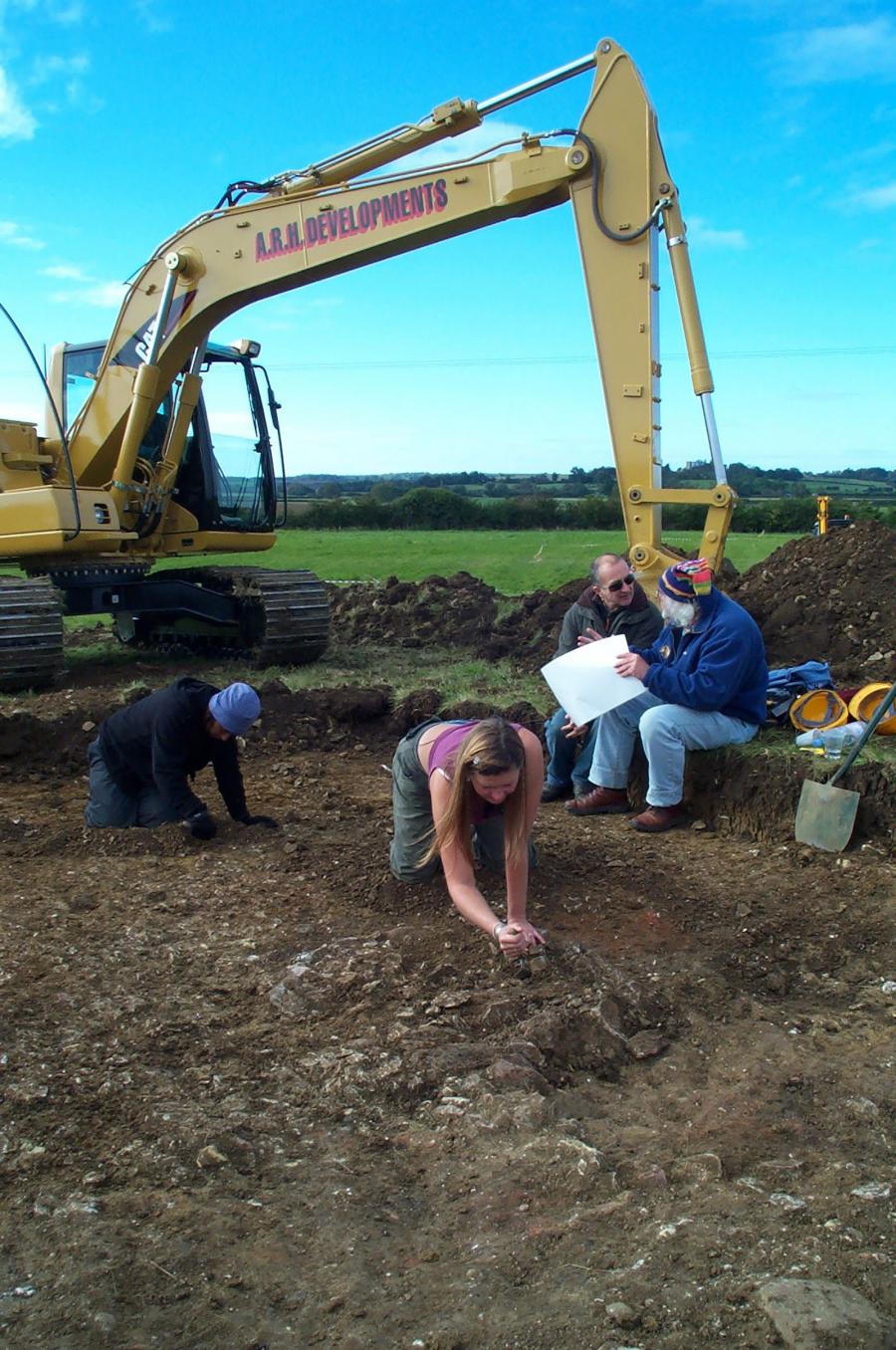Broadcast 3 April 2005
Wessex Archaeology was commissioned by Videotext Communications Ltd to undertake a programme of archaeological recording and post-excavation work on an archaeological evaluation undertaken by Channel 4’s ‘Time Team’ at Oliver’s Meadow, Gordon’s Lodge Farm, Hanslope, nr Grafton Regis, Northamptonshire, centred on NGR 477140 248100 (Figure 1). Gordon’s Lodge Farm lies approximately 3km to the west of the village of Hanslope, on the road between Hanslope and Grafton Regis.
Since 1998 the field known as Oliver’s Meadow has been subject to archaeological investigation by the Gordon’s Lodge Archaeological Field School (GLAFS). This work has identified two large sub circular enclosures close to the south eastern edge of the field, one of which is the subject of an ongoing excavation. The preliminary results from this indicate that the enclosure contains at least one building, with stone footings, as well as areas of industrial activity, dating from the 11th to early 13th century.
A magnetic survey undertaken by GSB Prospection Ltd succeeded in identifying the circuit of the larger enclosure, although the magnetic responses were poorly defined. A number of possible archaeological features were identified both within and outside this enclosure, some of which were investigated archaeologically. The presence of the excavation trench and spoilheaps severely restricted the survey on the smaller enclosure, and the existence of a complex of land drains further confused the results from this area. Despite these complications, a short length of enclosure ditch was identified.
The evaluation established that the two enclosures are likely to be contemporaneous, and form part of the same complex. The GLAFS excavations of the north eastern enclosure ditch (Enclosure A) have indicated that this was open during the 12th and 13th centuries. Although no medieval material was recovered from the lower fills of the ditch from the larger enclosure (Enclosure B), the quantity of medieval material recovered from the upper fills, the absence of any material of an earlier date and the evidence for medieval activity within this enclosure all suggest a medieval date.
Excavation within the enclosure B, to the south west, have identified the remains of two medieval buildings. These are less well built than that under excavation by GLAFS, one being post-built, and the second apparently having cob walls or walls resting on timber sills. Both were associated with stone lined ovens or hearths. The latter in particular appears to have been a kitchen or bakehouse, with a number of hearths or ovens, some clearly dismantled, whilst others were almost intact. Although no pottery was derived directly from the occupation deposits within this structure, pottery from the gully respecting the western and northern sides of the building dated to the 12th to 14th centuries.
The results of the Time Team excavations, in conjunction with the ongoing excavations of GLAFS appear to indicate that the two enclosures belong to an enclosed medieval rural settlement. The presence of high status fragments of stonework indicate the presence of a substantial masonry building, but no evidence of this has yet been identified. There is little evidence for activity on the site in the later medieval or post-medieval periods. The land was incorporated within a deer park in the 16th century, and probably remained as pasture after its disemparkment.
